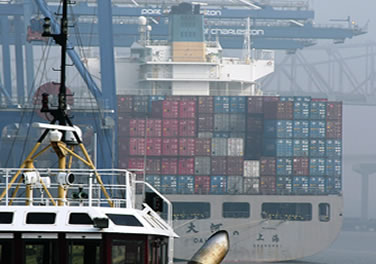Big vessels are here, the time left to act is shrinking
Work area(s)
Topic(s)

In 2011, when we presented Sanchez and Perrotti: “Looking into the Future: Big Full Containerships and their Arrival to South American Ports”1 at the IAME Annual Conference, the time span of the appearance of vessels averaging 13,000 TEU in South America was projected to be between 2016 and 2020. The great news was that on December 18, 2015, TCBuen, the Colombian terminal belonging to the Port of Buenaventura, received the largest container vessel ever to have operated in South America: the Maersk Edinburgh. Part of the AC2 service, this vessel is intended to connect China and South Korea with the Pacific Coast of Latin America, has a capacity of 13,102 TEU and measures 367 meters long and 48.2 meters wide. Whether by chance, or not, the arrival of the first 13k TEU vessel to Latin America virtually coincides with the opening of the new set of locks on the Panama Canal, through which it could smoothly sail.
“Looking into the Future…” warned of the urgent need for an efficient medium-term plan for the port industry and logistics that could maximize the benefits of its impact on the regional economy. These findings were derived from modeling techniques as well as estimates throughout several sample periods. They led to the conclusion that ship size evolution in South America is continuing to advance at paces similar to those of the main trade routes and that the time span for their arrival is progressively decreasing, as demonstrated by the Maersk Edinburgh’s arrival.
The present Maritime and Logistics Bulletin analyze the current industry situation, the forecast about arrival of the vessels averaging 13,000 TEUS to our region and proposes a review of port governance.
Country(ies)
- Latin America and the Caribbean